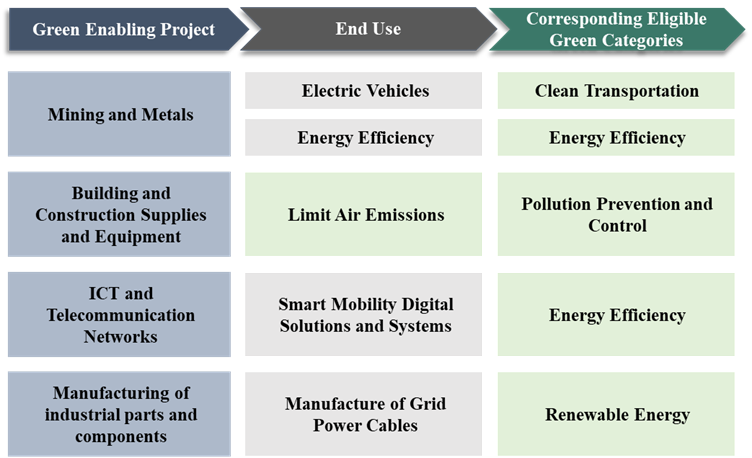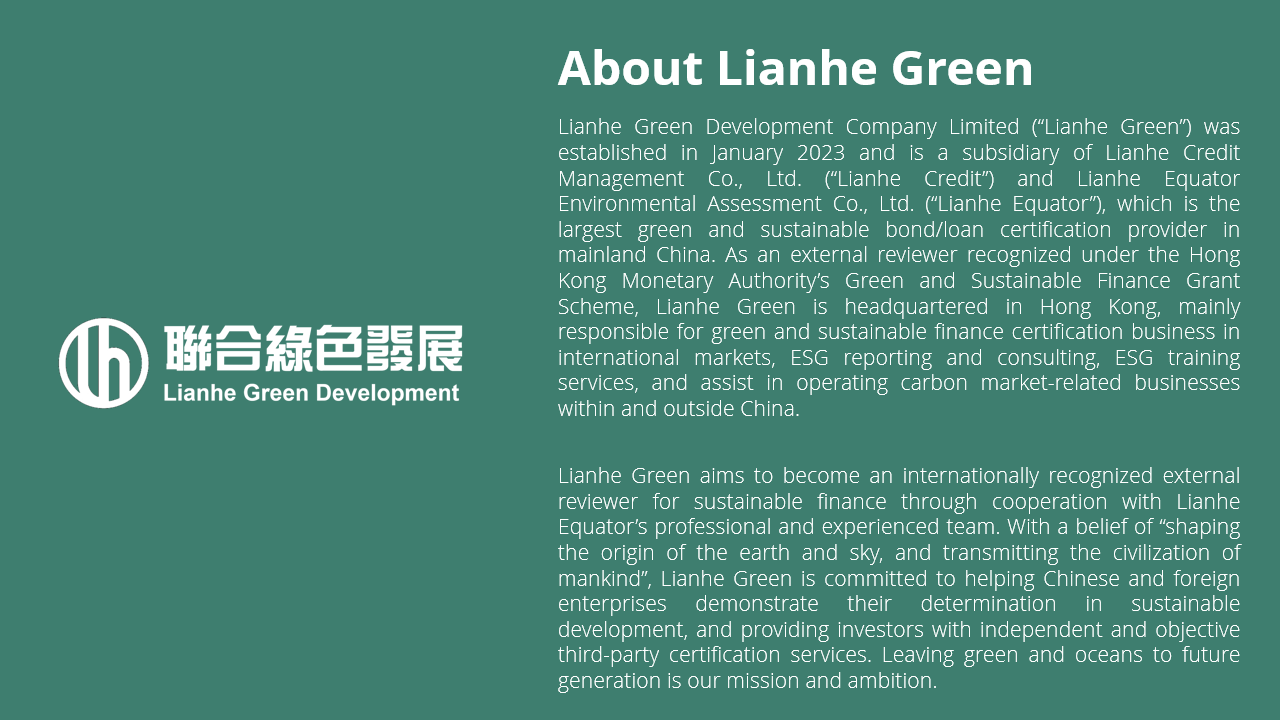On June 26, 2025, the International Capital Market Association (ICMA) announced significant updates to existing guidance documents at the annual general meeting of the Green, Social and Sustainability-Linked Bond Principles. Among these updates was the clear reference to the Green Enabling Projects Guidance in the new version of the Green Bond Principles.
So, what are Green Enabling Projects? How can they be incorporated into the scope of green bond support in practice? This article provides a systematic overview and analysis of Green Enabling Projects.
What is Green Enabling Project?
According to the Green Enabling Projects Guidance published by ICMA, Green Enabling Projects refer to those that are part of the value chain of green projects and are key and indispensable to them. Although these projects are not explicitly defined as green projects, they remain critical for eligible green projects.
Green Enabling Projects are subject to all the criteria described below:
1. Necessary for an enabled Green Project’s value chain
Green Enabling Project is not necessarily a conveyor of a direct positive environmental impact on its own, but is a necessary key component in the development and implementation of the green projects they enable.
2. No carbon lock-in
Due to varying local context, there is no single definition of carbon lock-in. According to the Green Enabling Projects Guidance, carbon lock-in typically refers to scenarios where high-emission infrastructure or assets continue to be used, despite the possibility of substituting them with low emission/low-carbon alternatives. A classic example is investing in new coal-fired power plants: once built and operational, such facilities typically continue operating for decades, thereby locking in high carbon emissions over the long term.
Green Enabling Projects must avoid relying on high-carbon-emitting technologies that are difficult to transition to low-carbon alternatives to prevent carbon lock-in effects.
3. Clear, quantifiable and attributable environmental benefit
The environmental benefits of Green Enabling Projects can be calculated based on their actual impacts or estimated based on the potential impacts of their enabled green projects. ICMA recommends using quantitative performance indicators to measure environmental benefits, such as emissions avoided.
4. Mitigated adverse social or environmental impacts
Green Enabling Projects should properly identify and manage environmental and social impacts and risks, ensuring that the projects themselves do not cause significant adverse social impacts.
At the same time, issuers should transparently disclose the significant impacts arising from green enabling projects.
How to Incorporate Green Enabling Projects into Green Bonds?
ICMA has identified ten eligible green project categories in the Green Bond Principles, including renewable energy, pollution prevention and control, clean transportation, green buildings, etc. Industries that support the development/implementation of these ten categories of green projects may qualify as green enabling projects. In practice, incorporating green enabling projects into green bonds requires meeting the following requirements:
Pre-Issuance
Ensure the transparency on end-use
Green Enabling Projects often have multiple potential end-uses, which are not limited to the green projects they enable. Green Enabling Projects must provide clear, quantifiable, and attributable environmental benefits:
- Where the end-use is known and traceable, the environmental benefits contributed by the Green Enabling Projects to the green project can be disclosed using proportional calculation methods.
- Where the end-use is not known, reliable and quantifiable external assumptions can be used to demonstrate the role of the Green Enabling Projects in green projects or market development. For example, based on technical characteristics, application scenarios, or market share, the scale of application driven by the green enabling project can be derived.
Depending on the end-use, issuers may choose to fully allocate or proportionally allocate the Green Enabling Projects into the green bond.
Identify Corresponding Eligible Project Categories
Green Enabling Projects do not constitute an 11th eligible green project category but are mapped to different eligible project categories based on their specific end use:

(Source: ICMA, Lianhe Green analysis)
Post-Issuance
To enhance transparency, during the bond term, issuers should regularly disclose impact reports in accordance with the Green Bond Principles. When disclosing the environmental impacts of green enabling projects, they must also disclose and periodically update the external assumptions, technical standards, calculation methods, etc., used. Additionally, issuers should carefully avoid double-counting environmental impacts.
Market Impact
The Green Bond Endorsed Projects Catalogue (2025 Edition), set to take effect on October 1, 2025, has also innovatively introduced a low-carbon enabling label, indicating that items marked with a "√" are projects with low-carbon enabling contributions. Similar to green enabling projects, low-carbon enabling projects refer to those that, while not directly generating carbon reduction benefits themselves, significantly contribute to carbon reduction in other industries.
The updates in these two important documents emphasize the significance of enabling projects, marking that green finance support is expanding beyond end-user green and low-carbon industries to encompass upstream segments of their industrial chains.
FAQ
Q1: Under which eligible categories do Green Enabling Projects fall in green bonds?
- Green Enabling Projects are not a separate eligible category but are mapped to different eligible categories based on their end-use (as shown in the image above).
Q2: Are there additional requirements for green bonds that include Green Enabling Projects compared to ordinary green bonds?
- Yes, as mentioned above, green bonds encompassing Green Enabling Projects must clearly disclose the use of proceeds pre-issuance and during the bond term, and calculate/estimate the environmental benefits brought by the green enabling projects.
Q3: Can Green Enabling Projects consist of only part of the use of proceeds of a green bond?
- Yes, green bonds can include multiple eligible categories, including those corresponding to green enabling projects.
Q4: If only part of an issuer’s product is used to enable green projects, can it be considered a green enabling project?
- Yes, based on the end-use, the portion used to enable green projects can be proportionally allocated into the green bond amount.
Reference Resources
1、 Green-Enabling-Projects-Guidance-document-June-2024-including-June-2025-Annex-on-FAQ.pdf
2、 Green-Bond-Principles-GBP-June-2025.pdf
 return
return
 current location:Home
current location:Home
 Reports and Insights
Reports and Insights
 Reports and Insights
Reports and Insights
 [Monthly Report] Green Enabling Projects Officially Incorporated into International Standards - Detailed Analysis of ICMA’s New Guidelines and Market Impact Outlook
[Monthly Report] Green Enabling Projects Officially Incorporated into International Standards - Detailed Analysis of ICMA’s New Guidelines and Market Impact Outlook







